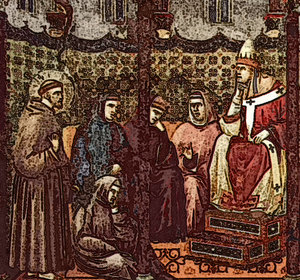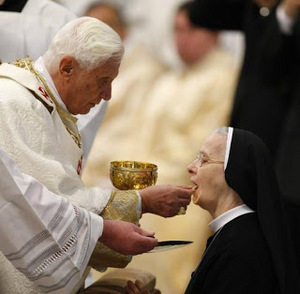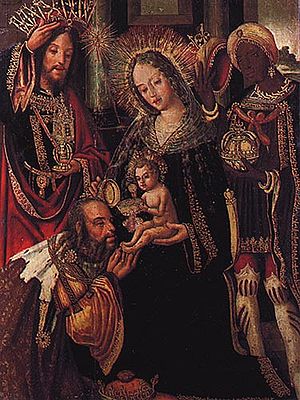 Last Sunday at the keynote address given by Father Julián Carrón who said among many other good things is that preaching is taking part in man's search for God. Moreover, preaching arouses curiosity from within, that one of its aim is to overcome the divide between faith and life.
Last Sunday at the keynote address given by Father Julián Carrón who said among many other good things is that preaching is taking part in man's search for God. Moreover, preaching arouses curiosity from within, that one of its aim is to overcome the divide between faith and life.Sacred Liturgy & Sacraments: January 2013 Archives
 Last Sunday at the keynote address given by Father Julián Carrón who said among many other good things is that preaching is taking part in man's search for God. Moreover, preaching arouses curiosity from within, that one of its aim is to overcome the divide between faith and life.
Last Sunday at the keynote address given by Father Julián Carrón who said among many other good things is that preaching is taking part in man's search for God. Moreover, preaching arouses curiosity from within, that one of its aim is to overcome the divide between faith and life.
We honor the witness of the Magi, Casper, Melchior and Balthasar. The Seekers from the East following the signature of God to the star burning brightly over the Light of the World. Saint John Chrysostom taught, "If the Magi had come in search of an earthly king, they would have been disconcerted at finding that they had taken the trouble to come such a long way for nothing. Consequently they would have neither adored nor offered gifts. But since they sought a heavenly king, though they found in him no signs of royal pre-eminence, yet, content with the testimony of the star alone, they adored: for they saw a man, and they acknowledged a God."
As you know Pope Benedict ordained 4 priests to the Order of Bishops today at the Sacrifice of the Mass for the Solemnity of the Epiphany. The Pope, per usual, hits the ball out of the park. He speaks eloquently about the ministry of the bishop for the Church. I read the following homily with astonishment. I am in awe of the profound nature of the vocation; I am sad to know so many called to this office by the Spirit and the Church live it with such lack of faith, hope, and charity, with a lack of mercy and the good of the people put in his charge. On this feast we pray for all the pastors of the Church, including the bishops. Let's look with mercy as the Lord has shown us mercy. Pay close attention to Pope.
We can note two meanings of the letters of inscription. First, the initials of the traditional names of the Three Magi: Caspar, Melchior and Balthasar. Second, the letters abbreviate the Latin words Christus mansionem benedicat. May Christ bless the house." Hence, the purpose of the blessing is manifest. The recalling that the Magi were the first of the nations to recognize the Divine Infant as the King of the Nations, and to acknowledge that we seek the face of God. The blessing and imposition of chalk reminds us that God is the origin of all blessings of our home and life.
By placing the crosses with the Epiphany inscription we remember that with the Incarnation there is also the Paschal Mystery.
As it noted by students of culture, the Epiphany inscription is made above the front door, so that all who enter and depart this year may enjoy God's blessing. "The month of January still bears the name of the Roman god Janus, the doorkeeper of heaven and protector of the beginning and end of things. This blessing "christens" the ancient Roman observance of the first month. The inscription is made of chalk, a product of clay, which recalls the human nature taken by the Adorable and Eternal Word of God in the womb of the Virgin Mary, by the power of the Holy Spirit" (MDK).
To bless your home this Epiphany, first read the Prologue of Saint John's Gospel, followed by the Our Father, and the following Collect; then write the inscription for this year above your front door with blessed chalk.
Blessing of Chalk
V. Our help is the name of the Lord.
R. Who made heaven and earth.
V. The Lord be with you.
R. And with thy spirit.
Let us pray.
Bless, O Lord God, this creature chalk to render it helpful to Thy people. Grant that they who use it in faith and with it inscribe upon the doors of their homes the names of Thy saints, Caspar, Melchior, and Balthasar, may through their merits and intercession
enjoy health of body and protection of soul. Through Christ our Lord.
And the chalk is sprinkled with Holy Water.
20 + C + M + B + 13




